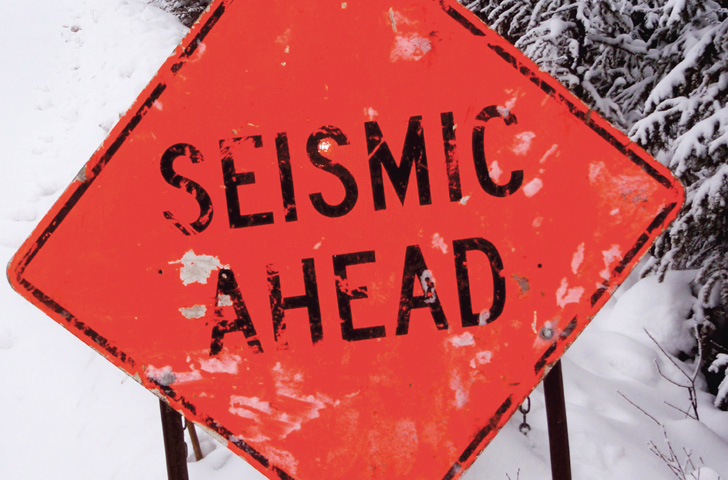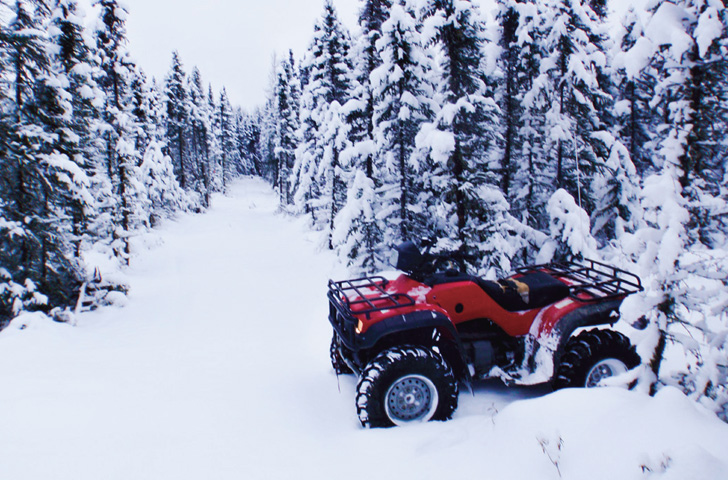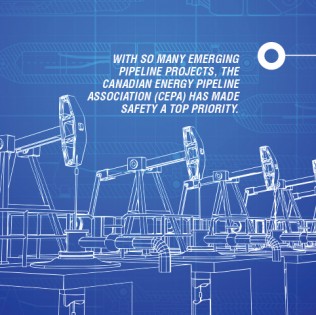by Tony Morley
| No comment
Published on April 3rd, 2013
Exploration and Production Adventures with Tony Morley - Running From Wolves
Nearly all drilling and petroleum production can trace its findings to the field work of the seismic crew. The seismic crew is the underappreciated, underpaid, little runt brother of the big drilling family that quietly works away to discover our future oil fields. After collecting my paycheck years ago for a month long tour in the Arctic, I remember being told by my crew boss, “there is always more money the closer you are to the well head.” Seismic is often a humble beginning for young starry-eyed explorers seeking adventures and challenges.
In Northern Canada, the often thankless job of seismic exploration is compounded by the worst working conditions on earth. Nothing you can even dream up is less comfortable than the freezing cold and driving winds of an Arctic winter, the bitter wetness and mosquitoes of spring, or the endless daylight of an Arctic summer. I’m trying not to remember this and am trying to block my thoughts of the up-and-coming discomfort of our modest camp as I fly up to Points North Air Base. This is my third flight of the day, and I’m about halfway to our project. I’ve still got a week stopover at the base to lend a hand with a geophysical project conducting the most grassroots of surveys.
My ear buds are in, and I’m listening to some classic Canadian jazz and staring out the window at the many thousands of small lakes that make up the Canadian north. Our landing is coming up and our pilot reaches behind and grasps my leg, our little four-seat plane is heavily laden and becoming difficult to manage as we approach our ice-landing strip. I hear him saying, “Hey, wake up; it’s about to get rough.” I’m now alert and sharp, if a bit shocked. I spent the first few years out of school working in helicopter rescue; I’ve trained for this, but I don’t have long to think about it as we close in for the strip. Quickly, I’m able to lock my seat belt; I cross my arms and hold my shoulders tightly as our plane lands and spins out of control into a snow drift. My first thoughts are to check if everyone is OK; my second thought is to start snapping photos, and then dig out my parka—the -38 degree winter cold helps you to promptly forget the comfort of the cabin.
If you’re stacking up the pros and cons of working in the Arctic, you’re going to quickly regret that your project isn’t located in the desert, the jungle, or any place other than this frozen wasteland.
For starters everything freezes—oil, diesel, jet fuel, metal—and every second of every day the crew will be battling mechanical failure and cold weather maintenance. Generators won’t start or shut down; cables crack when coiled, and our sleds are on a repair rotation lasting days or hours. Our helicopters often need electrical boosting, heating, and can’t fly in heavy snow. It’s a trial and error kind or work; every year is different, and every location has its own unique set of hazards and problems. I’ve never been on two projects that were the same, and I’ve certainly never been on a project where something didn’t freeze solid or break at a critical time. I clearly remember learning the hard way that if you put an electric heater in your truck and leave it for a week, all the snow on your windshield will melt and run down into the door well, where it will freeze solid and prevent you from getting to the airport.
There are plenty of similar problems in the desert, but at least you don’t have to keep watch over your back for polar bears and wolves. I’ve had two close calls up north, running from wolves to catch a helicopter and having a bear shot in our camp hallway as it tried to rip a hole through the door of our mapping department.
However, the Arctic is set to hold some outstanding reserves of oil and gas, and it’s this massive reserve of wealth and energy that has North America’s best men and women searching and drilling every winter.
After my short stopover in Points, I’m back on another small Charter plane further north. Our camp is a small hundred-man custom camp, fitted with the latest shipping-container stylings and comforts of home. Things have really improved in the last ten years: rooms are now often equipped with heaters, satellite televisions, and, occasionally, a patchy Internet. Exploration operators are learning that if they want to attract young talent, then communications is a major priority. In the years long before my time, food not connectedness was the main thing that motivated the men and kept them plugging across the frozen tundra. However, times have changed, now access to Facebook, email, and mobile network will be the deciding factor in project moral.
Canadian seismic companies are in a difficult position when it comes to green field and oil field exploration. Every year the winter thaw forces crews to be dismantled and everyone has to return south and look for a new source of work. Each new winter the seismic industry has to find and train up another team and deploy them into the deep north, often with little or no high-latitude experience. I know firsthand what it’s like for a crew member to lose the tips of his fingers to frostbite. Let your guard down up here, and you’re going to lose your fingers or toes.
In this resource battle to explore and document as much territory as possible, it’s all too easy to put production over warming up and staying dry, and all too often, someone learns the hard way and sits out the rest of the season. Once you have acquired frostbite, you’re done; it’s not something you can recover from in a matter of weeks.
There are still plenty of resources locked below the ice and snow of the North American Arctic, and so long as there is oil and gas to find, we will have some of the toughest seismic crews in the world deployed to the Canadian Arctic.
Did you enjoy this article?






 Heavy Oil – The Future of the Industry!
Heavy Oil – The Future of the Industry! Oil Production - A Global Snapshot
Oil Production - A Global Snapshot South Africa - The Rising Star of African Oil and Gas
South Africa - The Rising Star of African Oil and Gas Jim Keating of Nalcor Profiles the Exciting Exploration Opportunities Offshore Newfoundland & Labrador
Jim Keating of Nalcor Profiles the Exciting Exploration Opportunities Offshore Newfoundland & Labrador Brent Janke, Vice President East Coast, Suncor - Energy Audio Address
Brent Janke, Vice President East Coast, Suncor - Energy Audio Address
